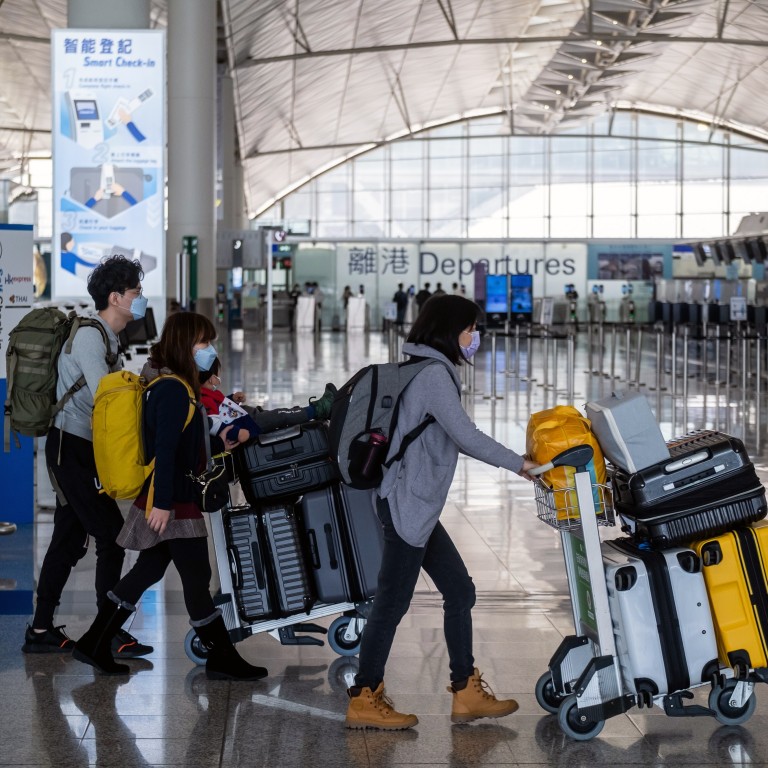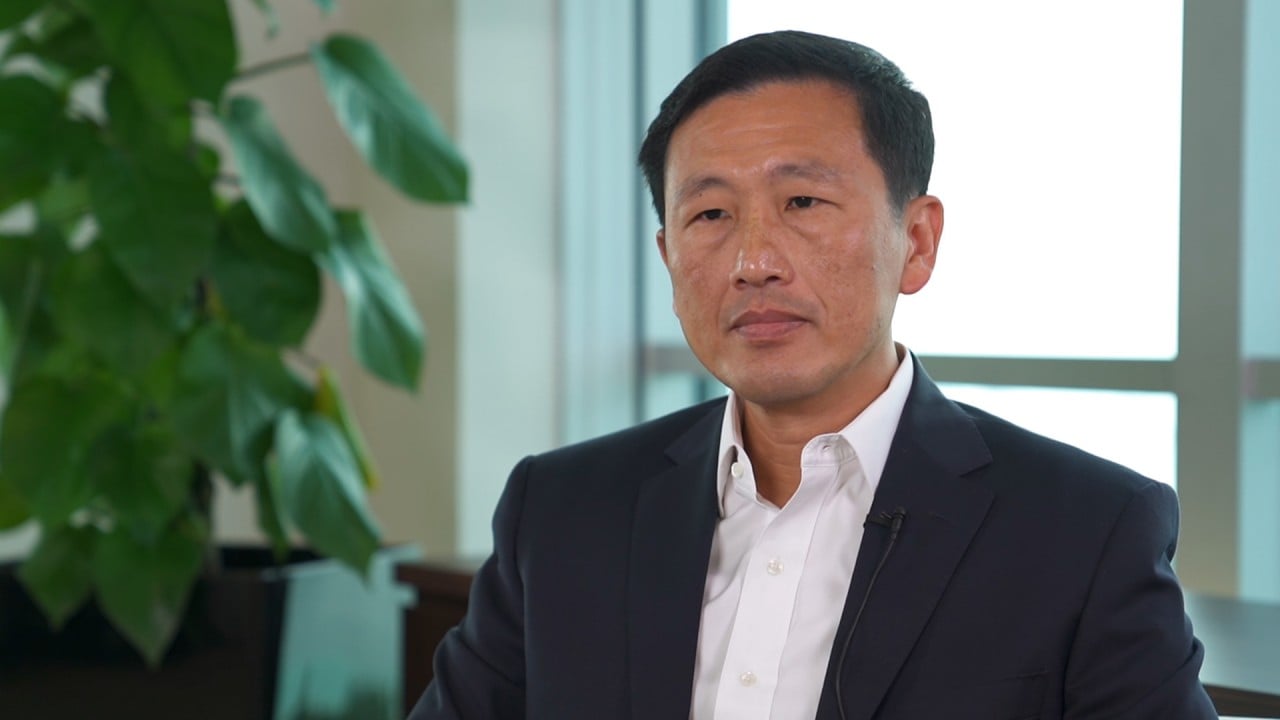
Why the Hong Kong-Singapore travel bubble is key in adapting to a ‘new normal’
- With coronavirus cases falling, the two aviation hubs need to examine ways to open themselves to travel while managing risks of disease transmission
- Hong Kong and Singapore should start planning for a future with Covid-19, with a travel bubble offering a way to adapt to it
Meanwhile, there is a growing realisation worldwide that even with the roll-out of highly effective vaccines against Covid-19, we may never reach the level of herd immunity required to eliminate the disease. This means that Covid-19 would become endemic, even as large-scale vaccinations combined with personal hygiene and some social distancing measures ensure that the disease burden is significantly reduced.
Aviation hubs such as Hong Kong and Singapore have to examine ways to open themselves to travel in ways that manage the risks of cross-border transmissions and assuage people who may be fearful or risk-averse.
Why Hong Kong and Singapore reacted differently to the travel bubble
Even if a high percentage of a population gets vaccinated – say 70 per cent – the coronavirus could still circulate in the population, although with much less illness occurring and health care systems able to cope with the caseloads.
Second, even if current vaccines are effective against new variants of Covid-19, the fact that these variants are more transmissible means that it would be more costly and onerous to achieve a given level of viral suppression. With increasing transmissibility, “zero infections” as a policy goal becomes less realistic.
The third reason for the persistence of Covid-19 is vaccine scepticism. Ironically in both Hong Kong and Singapore, the fact that the Covid-19 pandemic has been kept under control has lessened the sense of urgency to get vaccinated as soon as possible. This is not irrational: economists have long known that vaccination is a collective action problem: what is individually rational may not be collectively so.

09:08
Travel bubbles hit a snag amid global Covid-19 peak, says Hong Kong commerce minister Edward Yau
In the case of getting vaccinated against Covid-19, a person may assess that the risks of contracting the disease are negligible, especially if prevalence of the disease is very low, as it is in Singapore and Hong Kong. But if a sizeable minority of the population thinks this way, herd immunity through vaccination will not be achievable. Appealing to people’s altruism and reciprocity would help, but is unlikely to be sufficient.
For these reasons, governments need to start planning for Covid-19 as something that will be with us for the foreseeable future, and to adapt to such a future. The sooner governments are able to do that, the faster their societies would adjust to a new normal that lives with the coronavirus, rather than seek the unattainable goal of elimination.
Travel bubble: Singapore adds on-arrival test for Hong Kong travellers
For Hong Kong and Singapore, the world’s two most open and trade-dependent economies, it is even more important that their governments muster the courage to lead adaptation efforts. Countries or cities that do this sooner will enjoy the economic, social and psychological advantages of resuming a semblance of normality, giving them an advantage in attracting investments and talent, and positioning themselves for life after the pandemic.
STRUGGLE TO ADAPT
Unfortunately, it is much harder for Hong Kong’s government to reap such advantages than it is for Singapore. Having earlier declared “zero infections” as the goal of her administration, Chief Executive Carrie Lam Cheng Yuet-ngor has made it difficult for Hong Kong to adopt a more calibrated and sustainable approach to the pandemic.
Witness, for example, the fact that other than mainland China, Hong Kong is the only place in the world that has instituted a 21-day quarantine for almost all returning residents. This draconian measure extends even to those from Singapore, which has recorded very few locally transmitted cases in the last several months.

When the ATB was suspended, I had argued that Singapore’s transport minister should be commended for pursuing the idea in the first instance. Errors of commission attract more (and more severe) criticism than errors of omission, which may not even be noticed. That the public is more forgiving of sins of omission (for example, of governments not doing something that, in hindsight, should have been done) than sins of commission also leads to governmental inertia and the status quo being maintained longer than necessary.
This is why we should not expect the ATB between Hong Kong and Singapore to begin any time soon, even if the number of untraceable cases in both places justifies it. To complicate matters, the current fourth wave in Hong Kong is more stubborn, and harder to suppress, than earlier waves. The volatility in the daily number of confirmed cases makes it even harder for Hong Kong’s policymakers to launch the ATB for fear that a sudden spike in untraceable cases would force another suspension.
Even a roll-out of the already delayed vaccinations in March 2021 is unlikely to change the grim prognosis for the aviation and tourism industries in Hong Kong this year. By contrast, Singapore is far more willing to start travel bubbles with other jurisdictions; it has also already begun its inoculation campaign.

04:46
Hong Kong-Singapore travel bubble sets an example for the world, says Singapore transport minister
The omission bias is reinforced by at least two other well-known biases. The first is the sunk cost fallacy, which is the belief that all our previous efforts (in this case, of suppressing Covid-19) would go to waste if we were to change course or take any risks now. This is not rational because decisions should always be made prospectively, based on our assessment of future benefits and costs.
The second is a behavioural bias predicted by Daniel Kahneman’s Prospect Theory: diminishing sensitivity to losses (and gains). Given that the aviation and tourism industries have already suffered such heavy losses from the current and extremely stringent restrictions on travel, decision-makers are much less sensitive to additional losses.
Covid-19 is already a chronic crisis, not just an acute one. Governments must start adapting to it in ways that are more sustainable – both economically and socially. Lockdowns (which, mercifully, Hong Kong has avoided) and months-long school closures (which Hong Kong has resorted to all too frequently) will be increasingly hard for societies to stomach.
The opening of the ATB between Hong Kong and Singapore would give the people of both cities a much needed respite from Covid-19 restrictions, and help both governments experiment with ways to adapt to the new normal.
Donald Low is professor of practice in public policy and the director of the Institute of Emerging Market Studies at Hong Kong University of Science and Technology. He is also co-author of PAP v PAP: The Party’s Struggle to Adapt to a Changing Singapore.

